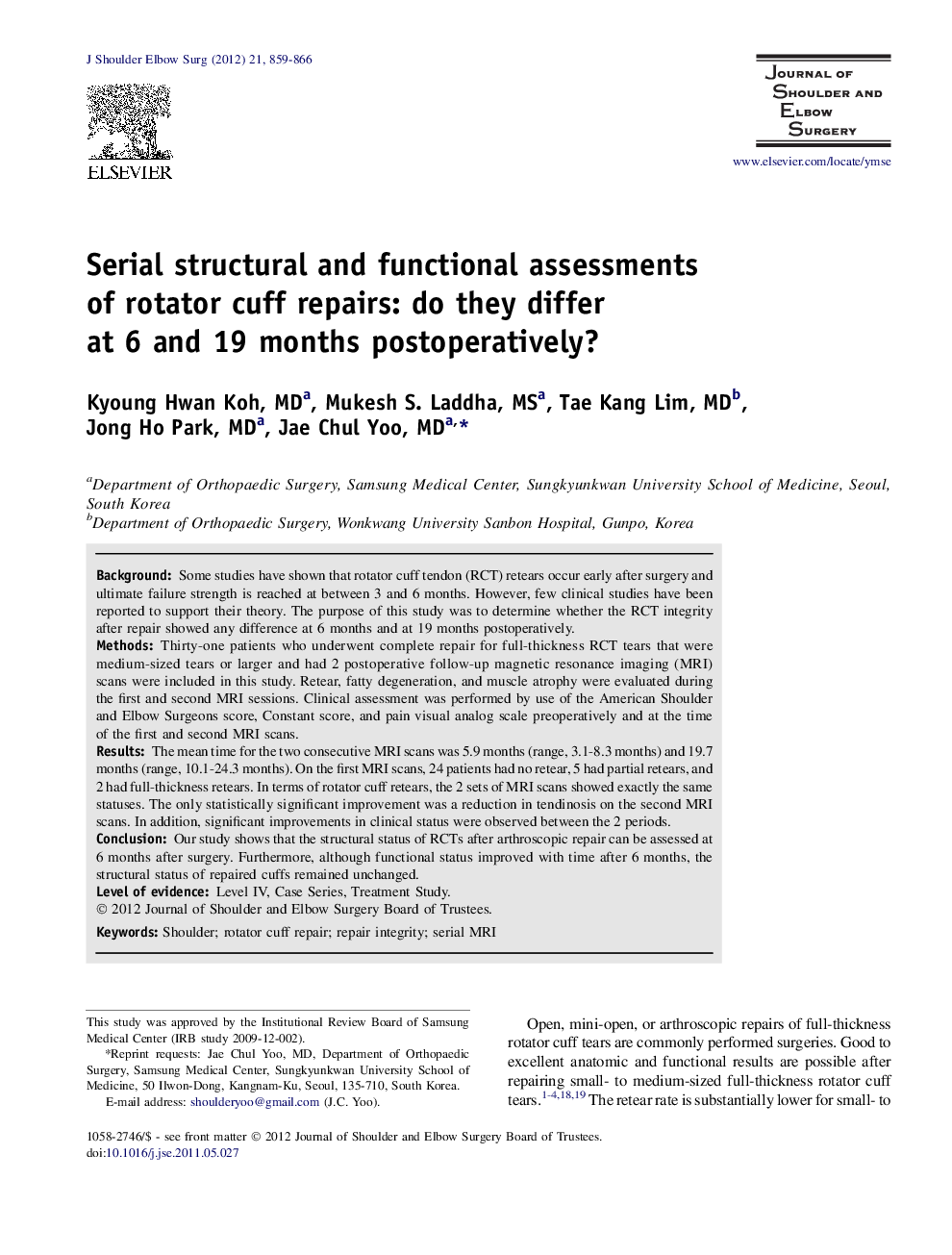| Article ID | Journal | Published Year | Pages | File Type |
|---|---|---|---|---|
| 4074290 | Journal of Shoulder and Elbow Surgery | 2012 | 8 Pages |
BackgroundSome studies have shown that rotator cuff tendon (RCT) retears occur early after surgery and ultimate failure strength is reached at between 3 and 6 months. However, few clinical studies have been reported to support their theory. The purpose of this study was to determine whether the RCT integrity after repair showed any difference at 6 months and at 19 months postoperatively.MethodsThirty-one patients who underwent complete repair for full-thickness RCT tears that were medium-sized tears or larger and had 2 postoperative follow-up magnetic resonance imaging (MRI) scans were included in this study. Retear, fatty degeneration, and muscle atrophy were evaluated during the first and second MRI sessions. Clinical assessment was performed by use of the American Shoulder and Elbow Surgeons score, Constant score, and pain visual analog scale preoperatively and at the time of the first and second MRI scans.ResultsThe mean time for the two consecutive MRI scans was 5.9 months (range, 3.1-8.3 months) and 19.7 months (range, 10.1-24.3 months). On the first MRI scans, 24 patients had no retear, 5 had partial retears, and 2 had full-thickness retears. In terms of rotator cuff retears, the 2 sets of MRI scans showed exactly the same statuses. The only statistically significant improvement was a reduction in tendinosis on the second MRI scans. In addition, significant improvements in clinical status were observed between the 2 periods.ConclusionOur study shows that the structural status of RCTs after arthroscopic repair can be assessed at 6 months after surgery. Furthermore, although functional status improved with time after 6 months, the structural status of repaired cuffs remained unchanged.
